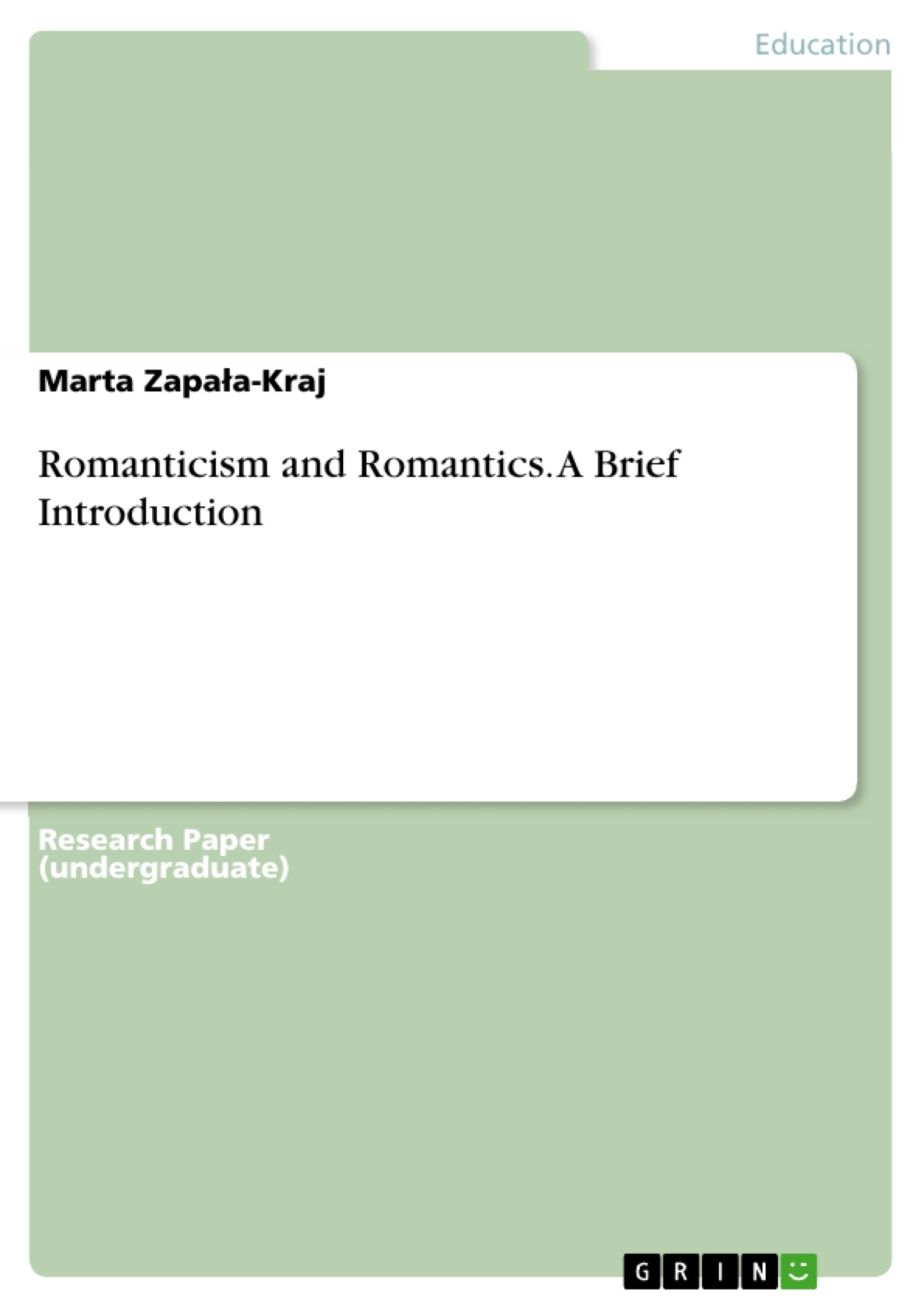The essential elements of the romantic spirit were curiosity and the love – the one of beauty and the more ‘natural’, down-to-earth form – passion and eroticism; and it is only as an illustration of these qualities, that it looked for in the Middle Age, because, in the overcharged atmosphere of the Middle Age, there are unworked sources of romantic effect, of a strange beauty, to be won, by strong imagination, out of things unlikely or remote.
Contents
Introduction
Chapter One: Romanticism
1.1 Defining the Subject
1.2 Romantic Literature and its Characteristics
1.3 Chosen Motifs and Themes in Romantic Literature
1.3.1 Imagination
1.3.2 Nature
1.3.3 Symbolism and Myth
1.3.4 The Everyday and the Exotic
1.4 Summary
Chapter Two The Romantics
2.1. First Generation of Romantic Poets
2.1.1. William Wordsworth
2.1.2. William Blake
2.1.3. Samuel Taylor Coleridge
2.2. First Generation Romantics’ Notion of Love
Chapter Three Second Generation of Romantic Poets
3.1. Lord George Byron
3.2. Percy Bysshe Shelley
3.3. John Keats
3.4. Second Generation Romantics and the Theme of Love
3.4.1. Erotic Love
3.4.2. Lost Love
3.4.3. In Praise of True Love
Conclusion
Bibliography
- Quote paper
- MA Marta Zapała-Kraj (Author), 2010, Romanticism and Romantics. A Brief Introduction, Munich, GRIN Verlag, https://www.grin.com/document/288401
-

-

-

-
Upload your own papers! Earn money and win an iPhone X. -

-
Upload your own papers! Earn money and win an iPhone X. -

-
Upload your own papers! Earn money and win an iPhone X. -

-
Upload your own papers! Earn money and win an iPhone X. -

-
Upload your own papers! Earn money and win an iPhone X. -

-
Upload your own papers! Earn money and win an iPhone X. -

-
Upload your own papers! Earn money and win an iPhone X. -

-
Upload your own papers! Earn money and win an iPhone X. -

-
Upload your own papers! Earn money and win an iPhone X. -

-
Upload your own papers! Earn money and win an iPhone X.

